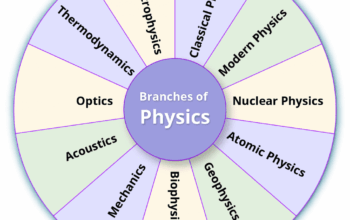Physics, as an intellectual pursuit, often seems enigmatic to those outside the realm of scientific inquiry. The common perception of a physicist typically evokes images of individuals engaged in complex calculations or laboring over intricate equations in dimly lit laboratories. Yet, this surface-level interpretation masks a profound tapestry of curiosity, creativity, and resilience that defines the physicist’s journey. The fascination with physics extends beyond mere formulas. It is an immersion into the very fabric of the universe, prompting inquiries that transcend the boundaries of conventional wisdom.
The allure of physics originates from its capacity to elucidate the mechanisms governing the universe. At a fundamental level, physicists seek answers to questions about the nature of matter, energy, space, and time. This quest often commences with a simple, though profound, inquiry: “Why?” Such a question, deceptively simple, opens pathways through which physicists explore intricate phenomena—from the minuscule behavior of subatomic particles to the boundless expansiveness of cosmological structures. This intellectual odyssey inevitably leads to the revelation that reality is far stranger and more intricate than one’s intuitive understanding might suggest.
A significant part of a physicist’s existence revolves around the perpetual pursuit of knowledge. This journey is punctuated by both exhilarating epiphanies and disheartening setbacks. The scientific method acts as a compass, guiding physicists through experimentation, observation, and theoretical modeling. Within this framework, hypothesis and validation become formative elements of the investigative process. Formulating a hypothesis is not merely the arrival at a conjecture; it involves considerable creativity and innovation. It is an act of imagination that lays the groundwork for empirical exploration.
Furthermore, the creative aspect of physics is frequently underscored by the importance of collaboration. The prevailing notion of the solitary scientist is vastly oversimplified. The collective nature of research illuminates the value of diverse perspectives and multifaceted problem-solving techniques. Physicists regularly convene in conferences and workshops, engaging in spirited discourse that catalyzes the evolution of ideas. The tension between competition and collaboration often manifests within the academic milieu, leading to breakthroughs that reflect the synthesis of collective intellect.
Moreover, physicists are often drawn to the discipline by an intrinsic wonder about the natural world. This fascination is not merely academic; it evokes a sense of spirituality and connectedness to the cosmos. The act of studying fundamental forces, such as gravity or electromagnetism, fosters a profound appreciation of the elegance and complexity of nature. For many, this realization transcends scientific inquiry, merging with philosophical contemplation and ethical considerations as they ponder humanity’s place within the vast universe.
Another aspect that characterizes the physicist’s experience is the rigorous nature of problem-solving. Physics grapples with abstract principles that often challenge the ego. The process of developing a solution requires not only a firm grasp of theoretical knowledge but also an ability to confront failure. Setbacks in research often serve as critical junctures, prompting reevaluation and the refinement of hypotheses. The physicist’s resilience is crucial; it is this persistence in the face of adversity that frequently leads to the most pivotal discoveries.
In parallel with intellectual rigor, there exists an aesthetic appreciation inherent within physics. The beauty of mathematical equations and the elegance of theoretical models contribute to the physicist’s experience. For instance, concepts like symmetry, conservation laws, and the mathematical descriptions of physical phenomena evoke a sense of artistry. A physicist may find joy in recognizing patterns and symmetries that pervade the natural order, nurturing a profound engagement with both science and art.
Public perception often relegates physics to a realm inaccessible to the uninitiated. This delineation raises questions concerning education and outreach within the scientific community. The onus lies on physicists to bridge this gap, fostering a greater understanding of their work’s implications and significance. Communicating complex ideas with clarity and enthusiasm is paramount. By distilling intricate concepts into relatable narratives, physicists can inspire the next generation, cultivating an enduring interest in science and its myriad applications.
Ultimately, being a physicist is an intricate dance between wonder and rigor, creativity and discipline. It involves the constant negotiation between theory and experiment, the known and the unknown. This duality fuels an infectious passion for discovery, as physicists remain steadfast in their pursuit of understanding. Outside observers may perceive physics as a sterile science solely focused on abstract equations; however, it is far more enriching. The underlying motivations—an insatiable curiosity, a desire to uncover truths, and a quest for meaning within the cosmos—are what truly define the essence of being a physicist.
In conclusion, the life of a physicist is multifaceted, marked by a relentless endeavor to decipher the complexities of the universe. This journey is enriched by collaboration, creativity, resilience, and an aesthetic appreciation for the natural world. At its core, physics is not merely a quest for knowledge; it is an exploration that invites us to contemplate our existence and our interconnectedness within the vast tapestry of the cosmos. As such, the true experience of being a physicist transcends the confines of laboratories and equations, weaving a narrative that resonates profoundly with the very essence of human curiosity.










